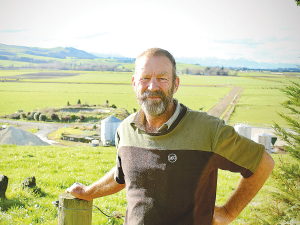NZ growers lead freshwater compliance
Horticulture New Zealand (HortNZ) says that commercial fruit and vegetable growers are getting ahead of freshwater farm plan regulations through its Growing Change project.
 Culverden farmer David Croft got his spreading equipment tested and calibrated by a Spreadmark accredited tester.
Culverden farmer David Croft got his spreading equipment tested and calibrated by a Spreadmark accredited tester.
With farmers now expected to produce Fresh Water Farm plans in addition to Farm Environment Plans, Culverden farmer David Croft decided to get his spreading equipment tested and calibrated by a Spreadmark accredited tester.
“We wanted to make sure we are spreading our nutrients correctly for our farm environment plan,” said Croft. “Also with the cost of fertiliser going up, it makes it quite a key area for us to save costs.”
Rather than a prohibitively complicated process, Croft said it was easy once he knew who to contact. Spread Test NZ’s Travis Churchill was the Canterbury contact, so organised the testing to be done on his farm. Other farmers also brought their machines to be tested at the same time. While they didn’t get Spreadmark certification they went through a similar process.
“We wanted to make sure we had our spreading width right,” said Croft. “Like any of these things there’s a costreward to it. We see it as an investment rather than an expense ($500 per spreader) because we get a payback on it. We also all learnt something from it.”
For Croft, the biggest lesson was that spinner speed is crucial.
“One of the farmers didn’t have a tachometer to check and it really upset his first pass with a horrible spread pattern. The spinners were too fast and were fracturing the urea.
“So it concentrated the product at the back of the spread and it didn’t fly as far.”
The calibration of the spreader between different product loads was also a key lesson, and because of different spreading patterns over the trays, Croft ended up altering his spreading width from 18 metres (urea) to 15 metres for NProtect.
Superphosphate was also an area of interest for Croft, who spreads his own.
“We do the one hectare soil samples and variable-rate phosphate applications, which is what got us interested in getting our spreader tested. Most people just do it for urea but we spread our own super too.”
Croft’s spreaders tested well but he queried the standard of the super, which showed to be too fine in the sieve box test. This required Croft to narrow up his spread pattern to 12 metres.
“I would highly recommend this to other farmers who are spreading their own product. As one of the biggest costs to farmers, we need to make sure we are getting bang for buck. We’d definitely do it again and currently plan to do it every two years.”
A major feature of the Ashburton A&P Show, to be held on October 31 and November 1, will be the annual trans-Tasman Sheep Dog Trial test match, with the best heading dogs from both sides of the Tasman going head-to-head in two teams of four.
Fewer bobby calves are heading to the works this season, as more dairy farmers recognise the value of rearing calves for beef.
The key to a dairy system that generates high profit with a low emissions intensity is using low footprint feed, says Fonterra program manager on-farm excellence, Louise Cook.
Rural retailer Farmlands has reported a return to profitability, something the co-operative says shows clear progress in the second year of its five-year strategy.
According to a new report, the Safer Rides initiative, which offered farmers heavily discounted crush protection devices (CPDs) for quad bikes, has made a significant impact in raising awareness and action around farm vehicle safety.
OPINION: In the past weeks, much has been said and written about one of New Zealand's greatest prime ministers, James Brendan Bolger, who died just a few months after his 90th birthday.